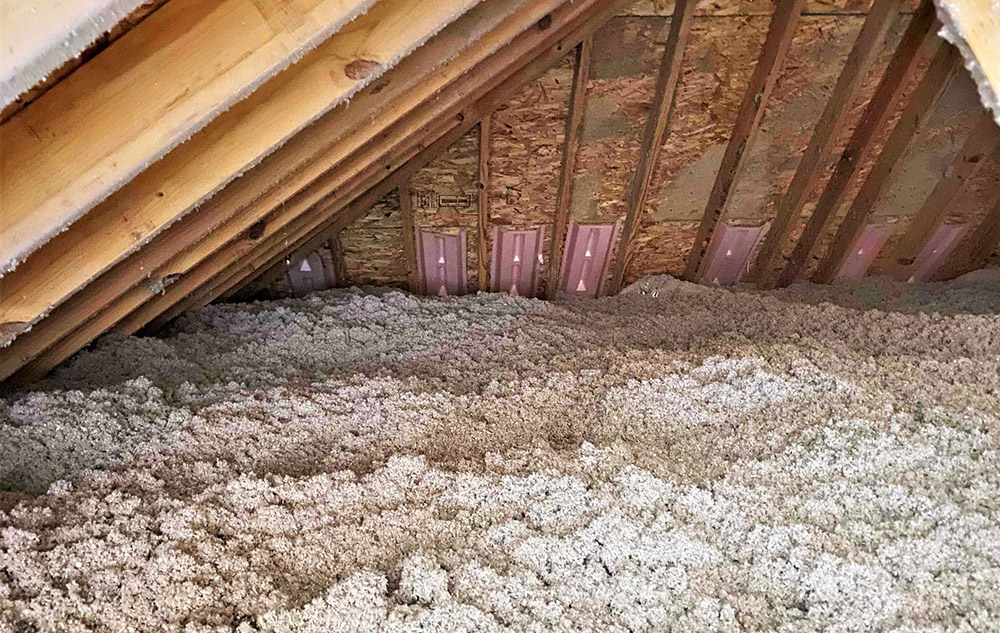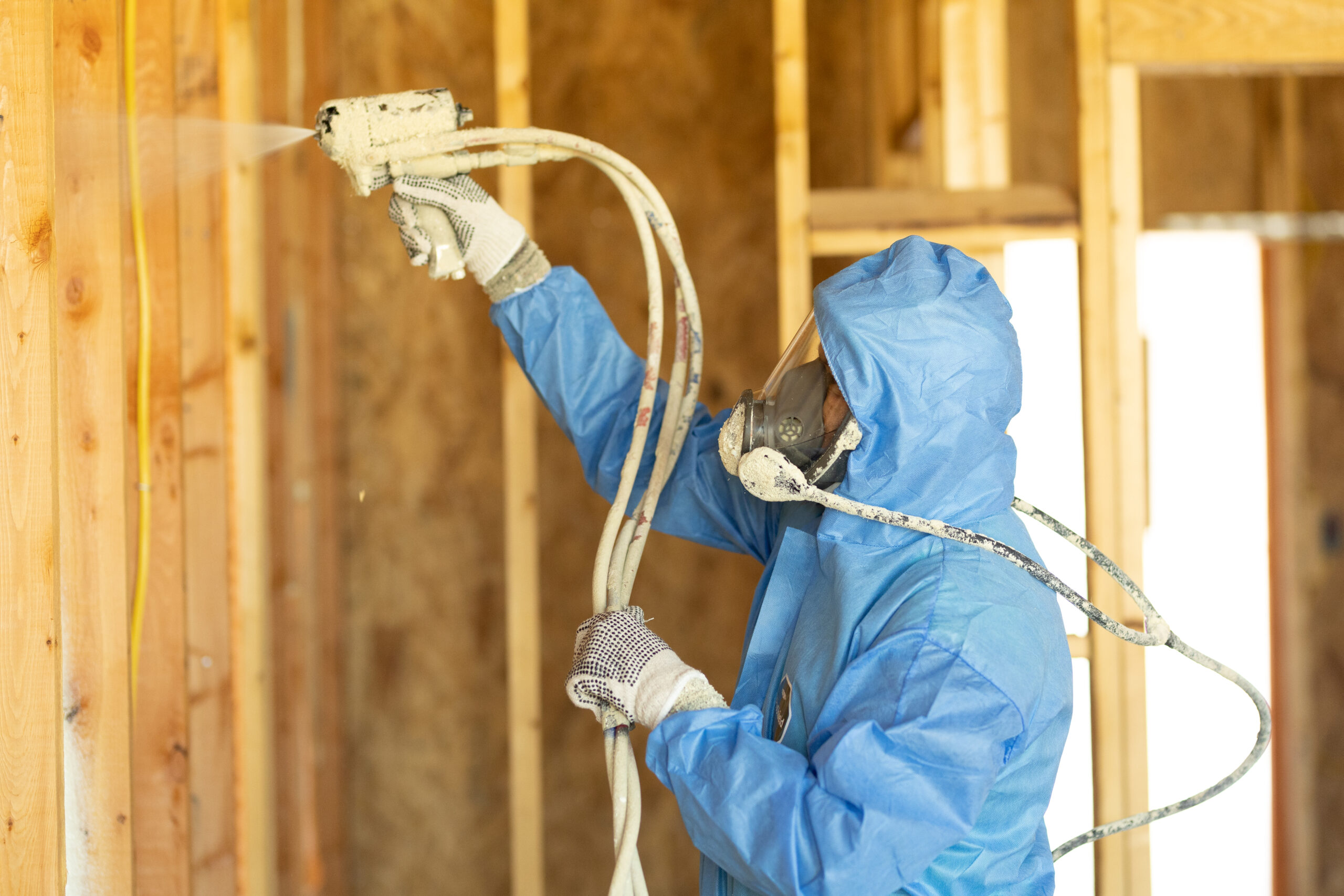Usual Misconceptions Concerning Spray Foam: Debunking the Misconceptions
Usual Misconceptions Concerning Spray Foam: Debunking the Misconceptions
Blog Article
Spray Foam: The Ultimate Option for Air Sealing and Insulation
Spray foam insulation has arised as a leading solution for reliable air sealing and thermal insulation, supplying a special combination of residential properties that establish it apart from typical methods. Understanding the full range of its benefits, setup procedures, and contrasts with other insulation types is crucial for making notified choices.
What Is Spray Foam?
Spray foam is a functional insulation material that combines the concepts of air securing and thermal resistance to boost energy performance in buildings. Composed mostly of polyurethane or various other comparable substances, spray foam is applied as a fluid that expands upon call with surfaces, creating a solid, continual layer of insulation. This distinct property enables it to fill up spaces, splits, and gaps that typical insulation materials might ignore, offering a premium air seal.
There are two main sorts of spray foam: open-cell and closed-cell. Open-cell spray foam is lighter and much more versatile, supplying outstanding noise absorption and a reduced R-value per inch - Spray Foam. In contrast, closed-cell spray foam is denser, providing a greater R-value, wetness resistance, and included structural stability to developing components
The application process normally entails customized tools, guaranteeing a smooth application that sticks to various substrates, including wood, concrete, and metal. This flexibility makes spray foam appropriate for both brand-new constructions and retrofitting existing frameworks. Its capacity to produce an airtight obstacle dramatically adds to decreasing power intake and boosting indoor air high quality, thereby making it a favored selection among property owners and builders alike.
Advantages of Spray Foam Insulation
One of one of the most significant benefits of spray foam insulation is its exceptional capacity to create a continual air obstacle, which successfully lessens energy loss. Unlike standard insulation products, spray foam broadens to fill up splits and spaces, guaranteeing that air leak is dramatically minimized. This particular not only boosts power effectiveness but likewise results in reduce utility costs gradually.
Additionally, spray foam insulation provides premium thermal resistance, adding to a much more secure interior atmosphere. Its high R-value per inch permits reliable insulation in confined rooms, making it suitable for attics, walls, and crawl spaces. The moisture-resistant residential or commercial properties of spray foam assistance stop mold and mold growth, promoting healthier living problems.
An additional important benefit of spray foam insulation is its sound-dampening high qualities (Spray Foam). It efficiently minimizes noise transmission in between rooms, producing a quieter and extra comfortable home setting. The resilience of spray foam additionally sticks out, as it does not droop or resolve with time, maintaining its efficiency throughout its life expectancy
Just How Spray Foam Works
Understanding just how spray foam insulation functions is essential for valuing its effectiveness in air securing and thermal resistance. Spray foam insulation contains two primary components: isocyanate and polyol resin. When these components are mixed, they undertake a chain reaction that causes the product to expand rapidly, developing a thick foam that fills dental caries, fractures, and gaps.
As the foam expands, it complies with surfaces, creating an airtight seal that considerably minimizes air seepage. This particular makes spray foam insulation extremely efficient at preventing drafts and wetness infiltration, which can cause power loss and damage with time. In addition, the closed-cell variation of spray foam provides exceptional thermal resistance as a result of its inflexible structure, efficiently decreasing warm transfer.
The unique buildings of spray foam permit it to satisfy irregular surfaces, making certain detailed insurance coverage and a seamless barrier. Therefore, spray foam insulation not only improves power performance however also adds to improved indoor air quality by lowering the buildup of allergens and toxins. Ultimately, understanding the auto mechanics behind spray foam emphasizes its function as a superior option for insulation and air sealing in both industrial and property applications.
Installment Refine Review

Before setup, the room has to be effectively cleansed and prepped, ensuring that surfaces are totally free from particles, dampness, and dirt. Due to the fact that impurities can endanger attachment and general efficiency, this step is important. As soon as the location is prepared, the application includes blending the 2 elements of the spray foam, which broadens upon call and fills up spaces successfully.
Educated experts ought to carry out the installation, utilizing specific equipment to make sure consistent protection and ideal thickness. Safety safety measures, including wearing safety equipment and ensuring proper ventilation, are critical during this process. After application, the foam commonly remedies quickly, creating a solid obstacle that improves power effectiveness.
Comparing Spray Foam to Standard Insulation
When examining insulation options, spray foam insulation attracts attention in comparison to traditional products such as fiberglass and cellulose. One of the key advantages of spray foam is its superior air securing abilities. Unlike fiberglass and cellulose, which can allow air seepage, spray foam broadens upon application, loading spaces and gaps to develop an airtight seal. This causes enhanced energy performance, as less warmed or cooled down air leaves the home, bring about lower energy bills.
In addition, spray foam offers a higher R-value per inch than standard insulation kinds, offering more efficient thermal resistance in a thinner account. This particular is particularly helpful in rooms check my site with limited cavity depth. Additionally, spray foam is resistant to wetness and mold and mildew development, which can be a substantial worry with cellulose and fiberglass, specifically in humid environments.
Nonetheless, spray foam insulation typically carries a higher upfront cost than its standard counterparts. Property owners need to evaluate this preliminary investment against long-lasting energy cost savings and performance benefits. Ultimately, while both insulation kinds offer their function, spray foam arises as an advanced remedy for modern-day insulation demands, especially in terms best site of air securing and thermal effectiveness.

Conclusion
In summary, spray foam insulation stands for a very effective service for attaining optimal air sealing and thermal resistance. Its distinct properties, including moisture resistance and noise dampening, make it appropriate for numerous applications in both brand-new constructions and retrofitting jobs (Spray Foam). The first prices may be higher contrasted to typical insulation materials, the long-lasting benefits, such as considerable energy cost savings view publisher site and improved indoor air high quality, justify the investment and underscore its value in modern structure practices.
Spray foam insulation has arised as a leading service for effective air securing and thermal insulation, offering an one-of-a-kind combination of residential properties that establish it apart from standard methods.Spray foam is a versatile insulation product that integrates the concepts of air sealing and thermal resistance to boost energy effectiveness in structures.When examining insulation alternatives, spray foam insulation stands out in comparison to conventional products such as fiberglass and cellulose. Ultimately, while both insulation kinds serve their function, spray foam emerges as a more sophisticated option for modern-day insulation requirements, particularly in terms of air securing and thermal efficiency.
In recap, spray foam insulation represents a very effective remedy for achieving optimum air sealing and thermal resistance.
Report this page